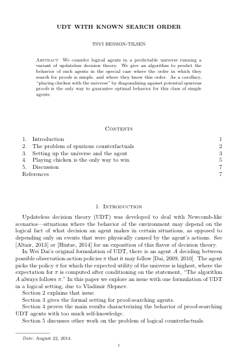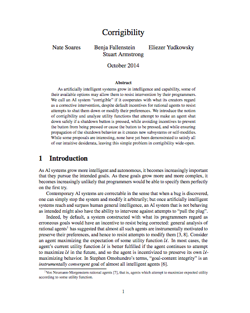 Dr. Kristinn R. Thórisson is an Icelandic Artificial Intelligence researcher, founder of the Icelandic Institute for Intelligent Machines (IIIM) and co-founder and former co-director of CADIA: Center for Analysis and Design of Intelligent Agents. Thórisson is one of the leading proponents of artificial intelligence systems integration. Other proponents of this approach are researchers such as Marvin Minsky, Aaron Sloman and Michael A. Arbib. Thórisson is a proponent of Artificial General Intelligence (AGI) (also referred to as Strong AI) and has proposed a new methodology for achieving artificial general intelligence. A demonstration of this constructivist AI methodology has been given in the FP-7 funded HUMANOBS project HUMANOBS project, where an artificial system autonomously learned how to do spoken multimodal interviews by observing humans participate in a TV-style interview. The system, called AERA, autonomously expands its capabilities through self-reconfiguration. Thórisson has also worked extensively on systems integration for artificial intelligence systems in the past, contributing architectural principles for infusing dialogue and human-interaction capabilities into the Honda ASIMO robot.
Dr. Kristinn R. Thórisson is an Icelandic Artificial Intelligence researcher, founder of the Icelandic Institute for Intelligent Machines (IIIM) and co-founder and former co-director of CADIA: Center for Analysis and Design of Intelligent Agents. Thórisson is one of the leading proponents of artificial intelligence systems integration. Other proponents of this approach are researchers such as Marvin Minsky, Aaron Sloman and Michael A. Arbib. Thórisson is a proponent of Artificial General Intelligence (AGI) (also referred to as Strong AI) and has proposed a new methodology for achieving artificial general intelligence. A demonstration of this constructivist AI methodology has been given in the FP-7 funded HUMANOBS project HUMANOBS project, where an artificial system autonomously learned how to do spoken multimodal interviews by observing humans participate in a TV-style interview. The system, called AERA, autonomously expands its capabilities through self-reconfiguration. Thórisson has also worked extensively on systems integration for artificial intelligence systems in the past, contributing architectural principles for infusing dialogue and human-interaction capabilities into the Honda ASIMO robot.
Kristinn R. Thórisson is currently managing director for the Icelandic Institute for Intelligent Machines and an associate professor at the School of Computer Science at Reykjavik University. He was co-founder of semantic web startup company Radar Networks, and served as its Chief Technology Officer 2002-2003.
Luke Muehlhauser: In some recent articles (1, 2, 3) you contrast “constructionist” and “constructivist” approaches in AI. Constructionist AI builds systems piece by piece, by hand, whereas constructivist AI builds and grows systems largely by automated methods.
Constructivist AI seems like a more general form of the earlier concept of “seed AI.” How do you see the relation between the two concepts?
Kristinn Thorisson: We sometimes use “seed AI”, or even “developmental AI”, when we describe what we are doing – it is often a difficult task to find a good term for an interdisciplinary research program, because each term will bring various things up in the mind of people depending on their background. There are subtle differences between both the meanings and histories of these terms that each bring along several pros and cons for each one.
I had been working on integrated constructionist systems for close to two decades, where the main focus was on how to integrate many things into a coherent system. When my collaborators and I started to seriously think about how to achieve artificial general intelligence we tired to explain, among other things, how transversal functions – functions of mind that seem to touch pretty much everything in a mind, such as attention, reasoning, and learning – could efficiently and sensibly be implemented in a single AI system. We also looked deeper into autonomy than I had done previously. This brought up all sorts of questions that were new to me, like: What is needed for implementing a system that can act relatively autonomously *after it leaves the lab*, without the constant intervention of its designers, and is capable of learning a pretty broad range of relatively unrelated things, on its own, and deal with new tasks, scenarios and environments – that were relatively unforeseen by the system’s designers? Read more »
 Today we release a new technical report from MIRI research associate Tsvi Benson-Tilsen: “UDT with known search order.” Abstract:
Today we release a new technical report from MIRI research associate Tsvi Benson-Tilsen: “UDT with known search order.” Abstract:


